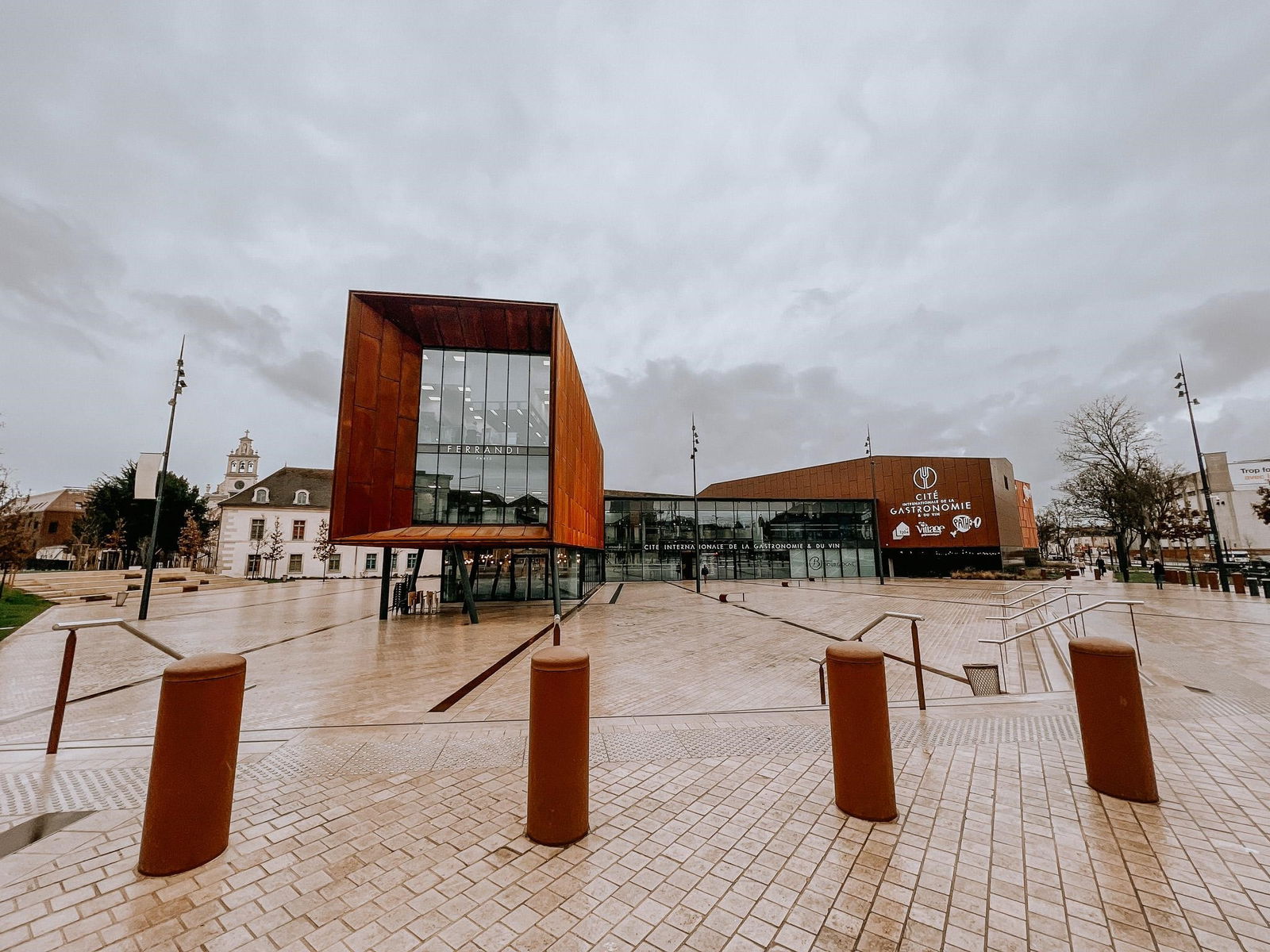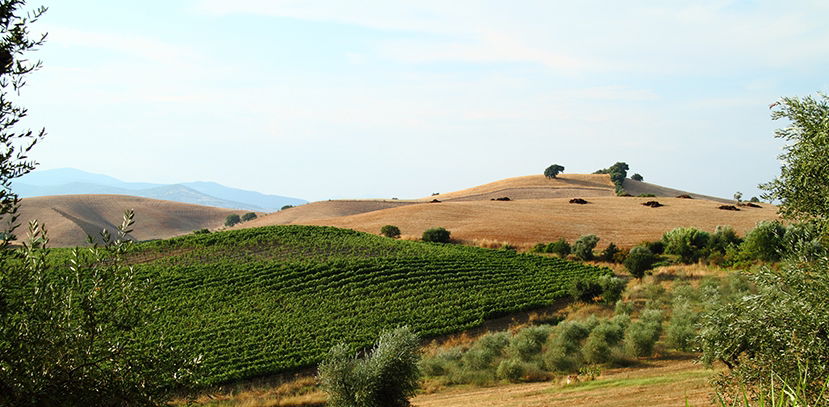BLOG
Discovering the Gastronomic Heritage of France: A Visit to Dijon's International Center for Gastronomy and Wine
Emily Lester Regional Spotlight

Uncovering the Secrets of Burgundy's Winemaking Tradition through Immersive Exhibitions, Workshops and Tastings...
When it comes to Dijon, thoughts of delicious French cuisine immediately come to mind. Indulging in traditional dishes like coq au vin, savoring the rich flavors of boeuf bourguignon, or adding a kick of mustard to your plate - are all part and parcel of the culinary experience of Dijon. But did you know that this city's culinary prowess dates back to the Middle Ages? Dijon was a bustling center of trade and commerce, attracting wealthy merchants and noblemen who demanded the best culinary delights. The result? An enduring reputation for top-notch cuisine that will tantalize your taste buds to this day, combining the classic gastronomic traditions with the modernity of the new generation of innovative chefs.
In 2010, the ”Gastronomic meal of the French” was added to the UNESCO Intangible Cultural Heritage list, in recognition of its outstanding value as a tradition that has been passed down for centuries and has been the bedrock for communities and the fostering of social connections. In response to this accolade, the French Mission for Food Culture and Heritage pledged to promote the gastronomic meal by establishing a network of multidisciplinary facilities dedicated to gastronomy. In 2013, Dijon was selected as one of the cities to participate in this initiative, specifically focusing on promoting the culture of winemaking, wine, and its connection to gastronomy. Other cities that were included in this initiative were Tours and Lyon. The International Centre for Gastronomy and Wine (in French Cité Internationale de la Gastronomie et du Vin) in Dijon gradually came to life, with contributions from acclaimed winemakers, architects, culinary experts, and the local community, and opened its doors on 6 May, 2022. It aims to share and promote the values of the “Gastronomic meal of the French”, and the Climats, terroirs of Burgundy, which also hold UNESCO world heritage status. This ambitious project began in 2013 and has now become a new landmark destination that celebrates France's legendary lifestyle.

Within the 1,750m² exhibition space, the Cité brings together a variety of organizations and businesses under one roof, including the Ferrandi Paris school of culinary arts, a gastronomic shopping village, a museum, and the Ecole des Vins de Bourgogne, to name but a few. A major undertaking and, if first impressions are to be believed, one which will undoubtedly succeed!
Dijon is a city steeped in wine history. Although the days when a quarter of the population was employed in the wine trade are long gone, the city still holds strong ties to the industry. Early Benedictine abbeys, such as Saint Loup, established in 510, were fueled by the church's need for wine for mass and led to the expansion of vineyards to match the demand. However, when phylloxera arrived, the plantings changed drastically, and forced industrialization further transformed the city. Despite these changes, Dijon is the starting point of Bourgogne's Route des Grand Crus, which heads south across the Dijon Metropole, passing through Chenôve and Marsannay. In October 2021, Dijon successfully convinced the International Organization of Vine and Wine to relocate its headquarters from Paris to the city, solidifying its position as a global showcase for France's wine heritage.
The École des Vins de Bourgogne, a leading school in the wine-tasting industry, offers a classroom program inside the Cité. Visitors to Dijon will have the chance to indulge in a wine-tasting introduction, discover the various terroirs and Climats, understand the impact of vintage on wine, and receive tips on pairing wine with food. Both beginners and experts can participate in workshops and classes, which are included with a ticket to the Cité's exhibitions. Led by the BIVB (Interprofessional Wine Organization of Burgundy), these immersive, multi-sensory experiences offer a deeper understanding of the world of Burgundy wines.
The “Chapel of Climats and Terroirs” exhibit offers an innovative approach to understanding the history, terroirs, and appellations of Burgundy wines. Using immersive projections, real-life testimonials, and interactive installations, it makes learning about wine more accessible and engaging for non-experts. It's a unique way to impart knowledge and deepen understanding of the region's wine heritage, embracing the ever-present theme of respect for history and traditions while adding a modern twist.

The Cave de la Cité wine cellar spreads across three floors and the 600m² space offers visitors the opportunity to enjoy wine tasting in an authentic setting, outside of a sterile classroom environment. The cave boasts 250 different French wines by the glass and a vast selection of 3,000 wines sourced from all over the world. But, of course, particular prominence is given to the wines of Bourgogne. Visitors aren’t left feeling hungry as accompanying the wines, are delicatessen products created by Michelin-starred chefs.

Dijon's cuisine is shaped by its agricultural roots and the use of locally sourced ingredients. Traditional meals often include hearty stews and casseroles like boeuf bourguignon and coq au vin. The city's famous mustard is a staple in many dishes, both as a condiment and an ingredient. Escargots (snails) are also popular in Burgundy, typically served as an appetizer. The region is renowned for its cheeses like Epoisses and Cîteaux, which feature in many local dishes. Visitors can also indulge in traditional French pastries and desserts like pain d'épices (gingerbread).
The Cité Internationale Centre for Gastronomy and Wine is dedicated to educating and fostering an appreciation for food and wine. The organization offers a range of programs and activities that focus on developing a deeper understanding and appreciation for the culinary arts. This includes cooking classes, demonstrations, and workshops led by experienced chefs and instructors. These hands-on experiences provide visitors the opportunity to learn new techniques, discover new flavors and ingredients, appreciate the importance of correct wine pairings and gain a deeper understanding of the history and culture of food and wine.
GETTING THERE AND WHATS INCLUDED

The Cité can be accessed for free 7 days a week, allowing you to wander through the alleys and take in all the centre has to offer. Attractions that require tickets, such as the permanent and temporary exhibitions, the School of Burgundy Wines, and the Cellar, to name just a few, offer these for sale both on-site and online. There are a wide range of inclusive tickets, which offer special rates for a selection of different attractions. For first-time visitors, the 1st Discovery Ticket is recommended. Costing only 13 EUR, it includes:
- Free visit to the 2 permanent exhibitions: At the table, In the kitchen, and the temporary exhibition Pastry, it's not cake!
- Free access to the 1204 discovery of Dijon's heritage and its architecture, as well as the Sainte-Croix Chapel in Jerusalem, and the exhibitions À la table des Français (Climats and terroirs in Burgundy-Franche-Comté)
- Tasting of the two wines of the week or fruit juice
Much more information on tickets and prices can be found on the Cité de la Gastronomie's website.
When visiting the museum, be sure to take a stroll through the gardens located near the train station on the way there. The signs will guide you to the Cité, which is only a 10-minute walk from the station. You can also cross the bridge to the Arquebuse gardens, where you can view different varietals of plants, herbs, and flowers.
Book train tickets to Dijon from Paris using the SNCF website.

The Cité Internationale Centre for Gastronomy and Wine has been eagerly awaited since its announcement and it has not disappointed. A small ‘village’, if you like, within the beautiful city of Dijon, the Cité offers something for everyone: from excellent wine and food to enlightening educational experiences to modern and thought-provoking architecture. It should definitely be at the top of any visitors’ to Dijon checklists who want to explore the city’s wine/culinary history and culture.



